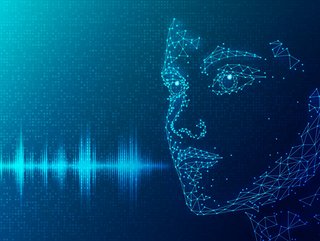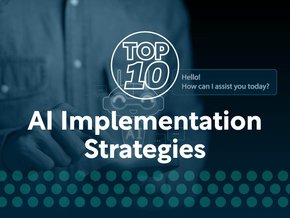Top 10 Natural Language Processing tools and platforms

From machine translation, summarisation, ticket classification and spell check, Natural Language Processing (NLP) helps machines process and understand the human language so that they can automatically perform repetitive tasks.
AI Magazine looks at 10 of the top NLP tools enterprises can harness to unlock the potential of AI.
10: Natural Language Toolkit (NLTK)
The Natural Language Toolkit (NLTK) is a leading Python platform for building programs to work with human language data. It has been deemed suitable for linguists, engineers and students alike because it is a free community-driven tool. NLTK also offers a guide to Natural Language Processing with Python, which provides an introduction to language processing programming. As it has been written by the NLTK creators, it offers a very hands-on guide through writing programs, categorising text and analysing linguistic structure, making the platform great for beginners.
9: MonkeyLearn
MonkeyLearn is a machine learning platform for text analysis, allowing users to get actionable data from text. Founded in 2014 and based in San Francisco, MonkeyLearn provides instant data visualisations and detailed insights for when customers want to run analysis on their data. Customers can choose from a selection of ready-machine machine learning models, or build and train their own. The company also has a blog dedicated to workplace innovation, with how-to guides and articles for businesses on how to expand their online presence and achieve success with surveys.
8: spaCy
Python-based library spaCy offers language support for more than 72 languages across transformer-based pipelines at an efficient speed. The latest version offers a new training system and templates for projects so that users can define their own custom models. They also offer a free interactive course for users who want to learn how to use spaCy to build natural language understanding systems. It uses both rule-based and machine learning approaches, which makes it more accessible to handle.
7: Stanford CoreNLP
Known for enabling its users to derive linguistics annotations for text, CoreNLP is an NLP tool that includes features such as token and sentence boundaries, parts of speech and numeric and time values. Created and maintained at Stanford University, it currently supports eight languages and uses pipelines to produce annotations from raw text by running NLP annotators on it. The program is written in Java, but users can interact while writing their code in Javascript, Python, or another language. It also works on Linux, macOS and Windows, making it very user-friendly.
6: MindMeld
Conversational AI platform MindMeld, owned by Cisco, provides functionality for every step of a modern conversational workflow. This includes knowledge base creation up until dialogue management. Blueprints are readily available for common conversational uses, such as food ordering, video discovery and a home assistant for devices. Cisco has a regular blog where its NLP experts discuss the platform in conjunction with a wide range of topics, including programming, app development and hands-on experience with automation.
5: Amazon Comprehend
Amazon Comprehend is also a service that uses machine learning to uncover valuable insights and connections in text. Examples of where the program can be used include index and search product reviews, legal briefs management and processing financial documents. It can classify, automate and search from entries that are not limited just to key words. It is relatively new, with a recent announcement that AI platforms will be delivered to customers under an expanded collaboration with C3 AI, further enhancing digital transformation.
4: OpenAI
The release of OpenAI's GPT-3 large language model in 2020 was a major milestone in the field of NLP. Its successor, GPT-4, a large multimodal deep learning model that can accept both image and text inputs and provide text outputs, builds on these innovations.
According to OpenAI, GPT-4 is a large multimodal model that, while less capable than humans in many real-world scenarios, exhibits human-level performance on various professional and academic benchmarks. It can be used for NLP tasks such as text classification, sentiment analysis, language translation, text generation, and question answering.
3: Microsoft Azure
Azure Cognitive Service for Language offers conversational language understanding to enable users to build a component to be used in an end-to-end conversational application. Through the program, users can make a conversational bot, a human assistant bot to help with customer engagement, as well as a command and control application which operates in a speech-to-text function and data can be extracted. It has a clear setup for business use and has clear parameters on how to use the AI.
2: Google Cloud
With customers including DocuSign and Ocado, Google Cloud’s NLP platform enables users to derive insights from unstructured text using Google machine learning.
Google Cloud’s AutoML enables users to train their own high-quality machine learning custom models to classify, extract, and detect sentiment with minimum effort and machine learning expertise using Vertex AI for natural language, powered by AutoML. You can use the AutoML UI to upload your training data and test your custom model without a single line of code.
Meanwhile Google Cloud’s Natural Language API allows users to extract entities from text, perform sentiment and syntactic analysis, and classify text into categories. Developers can apply natural language understanding (NLU) to their applications with features including sentiment analysis, entity analysis, entity sentiment analysis, content classification, and syntax analysis.
1: IBM Watson
Named after IBM's founder and first CEO, industrialist Thomas J. Watson, IBM Watson helps organisations predict future outcomes, automate complex processes, and optimise employees' time.
Watson was created as a question answering (QA) computing system that IBM built to apply advanced NLP, information retrieval, knowledge representation, automated reasoning, and machine learning technologies to the field of open domain question answering.
Today, Watson’s cloud-native Natural Language Understanding uses deep learning to extract meaning and metadata from unstructured text data, enabling users to extract categories, classification, entities, keywords, sentiment, emotion, relations and syntax from text.






